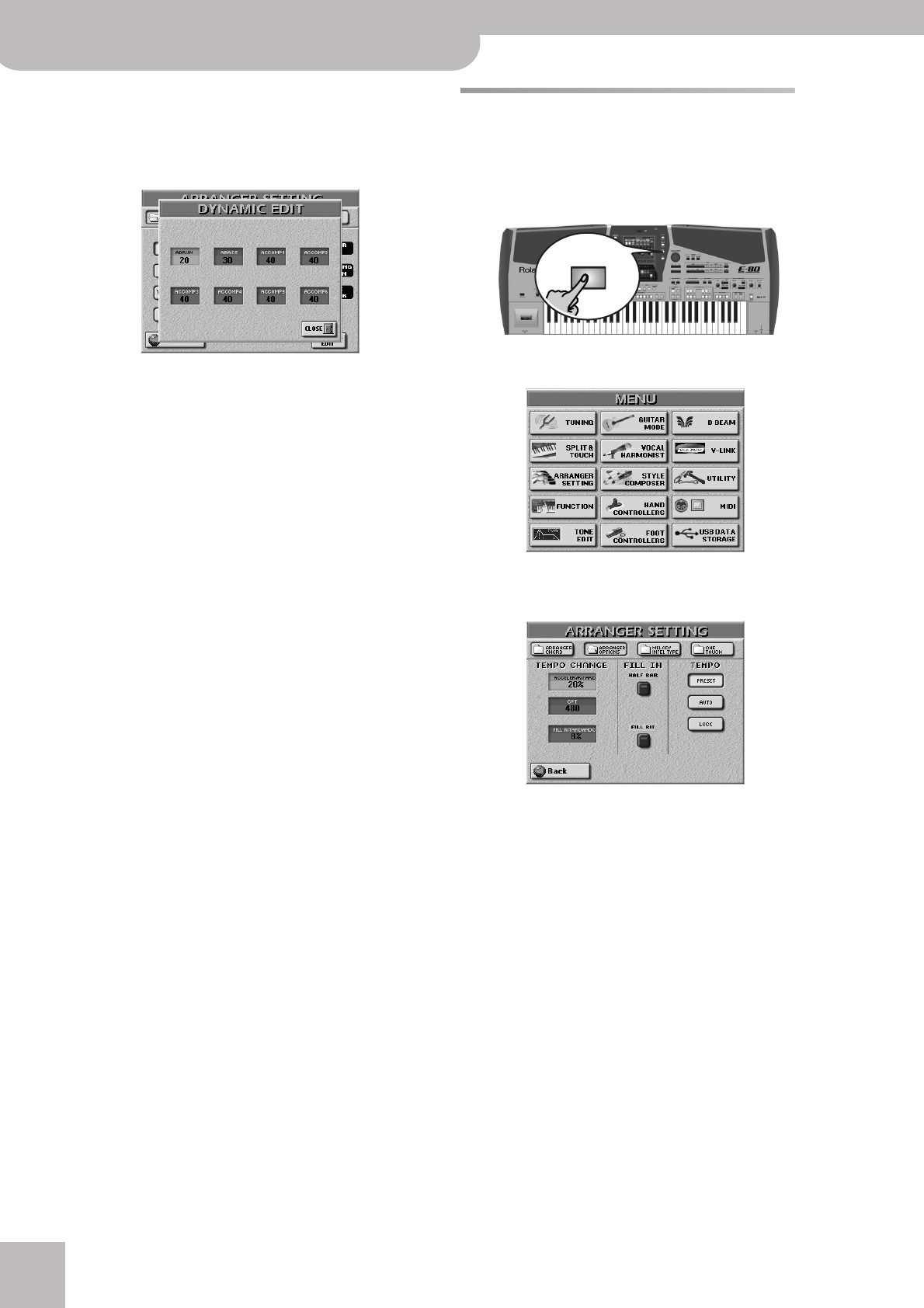
Additional Arranger/Style functions
90
r
E-80 Music Workstation
This function only becomes meaningful if you also
specify how the various Arranger parts should
respond to your velocity.
(3) Press the [DYNAMIC¥EDIT] field.
The display changes to:
(4) Press the field of the Arranger part whose velocity
sensitivity you wish to change.
There are eight Arranger parts: A.DRUMS (the drums),
A.BASS (the bass) and ACCOMP 1~6 (the melodic
accompaniment parts).
(5) Set the desired value with the [DATA÷ENTRY] dial or
the [DEC]/[INC] buttons.
You can specify positive and negative sensitivity val-
ues. Positive values mean that the volume of the part
in question increases when you strike the chord rec-
ognition area keys harder, while negative values
mean that the volume of the selected Arranger part
increases as your velocity becomes softer.
You could use extreme positive/negative ACCOMP
pairs (i.e. “127” and “–127”) to alternate between
those two lines simply by varying your velocity. One
part would then only be audible when you strike the
keys softly, while the other would only be triggered
by high velocity values.
Choose “0” for parts whose volume should not be
affected by your velocity values.
(6) Press the [CLOSE] field to return to the ARRANGER
CHORD page.
(7) Press the [EXIT] button to return to the main page.
Tempo-related settings (Arranger
Options)
The E-80 provides two parameters that allow you to
“play” with the Style tempo:
(1) Press the [MENU] button.
The display changes to:
(2) Press the [ARRANGER¥SETTING] field, followed by
the [ARRANGER¥OPTIONS] field.
Style Tempo
Let us briefly summarize everything that has already
been said about the tempo:
• Each Music Style has a preset tempo that is recalled
whenever you select that Style or when you take
advantage of the One Touch function (page 87). The
One Touch function, however, allows you to filter the
tempo setting (by activating [TEMPO], which means
that the preset tempo is no longer loaded automati-
cally).
• On the other hand, you are free to change a Music
Style’s tempo any time. See “Changing the tempo” on
p. 28. That value can be written to a User Program
and will then be set every time you select that User
Program.
• The Style (and also song) tempo is displayed on the
main page.
MENU


















